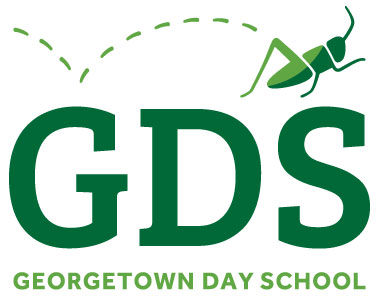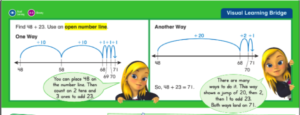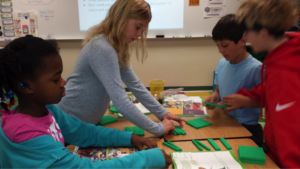At the GDS Lower School, we have been excited to adopt a new math program called enVision® for the 2019-20 school year. As we roll out the program this year we would like to share with you a snapshot into the daily practice across the Lower School. While the content grows across grades, the elements of each lesson are similar. These lesson elements are part of why we chose enVision math for GDS: they are reflective of our belief in all students seeing themselves as mathematicians; they support different types of thinkers by providing multiple ways to find an answer; they encourage 21st century skills such as collaboration and communication; and they foster a growth mindset.
Solve and Share
This first step offers an opportunity for students to grapple with and then share their own ways of solving the same problem before teachers make any strategy suggestions. Problems provide a context for students to enter the lesson at their own level, with a low floor and high ceiling. In practice, when learning to add two two-digit numbers, 2nd graders showed how to use an open number line, how to break apart the two numbers into tens and ones and add by place value, and how to add using the hundreds chart.
Visual Learning Bridge
Teachers have the option of showing a video or using a journal page full of examples that bridge the learning from the Solve and Share to the day’s lesson. The videos begin with more concrete visual representations and move toward symbolic and abstract representations. In the videos, students really enjoy the animated student characters that grow and mature over time—just like our students! Students have enjoyed learning the names of the characters and look forward to their appearances in the book and videos. These diverse characters allow students to see themselves represented as mathematicians.
Convince Me
This part of the lesson offers the first chance for students to practice the concept or skill that was presented in the Visual Learning Bridge. It’s usually one question that is either conceptual or computational. Recently, the 4th graders were asked to match bar diagrams with number stories and equations. In the enVision® program, students are exposed to bar diagrams as early as 1st grade as a tool for addition and subtraction. This visual model is then applied for multiplication and division in the upper grades.
Guided Practice
One of the key ingredients necessary for students to internalize learning is conversation; language solidifies learning. In 3rd grade the students are assigned math partners and often asked to complete the guided practice section in collaboration with their partner, sharing and comparing their work while having meaningful mathematical conversation. Students might compare ideas about sets of numbers that do or don’t make a fact family or discuss how to use multiplication facts to help us know division facts.
Independent Practice
The daily Independent Practice work includes computational practice, problem solving, and at least one higher order thinking question. During a lesson on doubles in the 1st grade, two students experienced similar “aha moments” when they realized that only even numbers can be the sum of doubles. One student made the realization using a number line, while the other was exploring with larger numbers. Both had the chance to share their observations with the whole class during a wrap-up conversation.
Enrichment and Games
Enrichment is an integral part of the lessons. Each lesson offers enrichment activities, reteaching, and sometimes STEM-connected activities to further challenge or support student learning. enVision® also has an online component that includes a “Game Center” full of online games that are aligned with specific lessons, providing students the opportunity to play with and practice concepts they have learned.
The enVision® program helps develop student problem solving skills and builds deeper conceptual understanding and procedural fluency. The elements of each daily lesson provide opportunities to strengthen student competencies with essential mathematical practices. We look forward to the long-term benefits of this program in the years to come.




